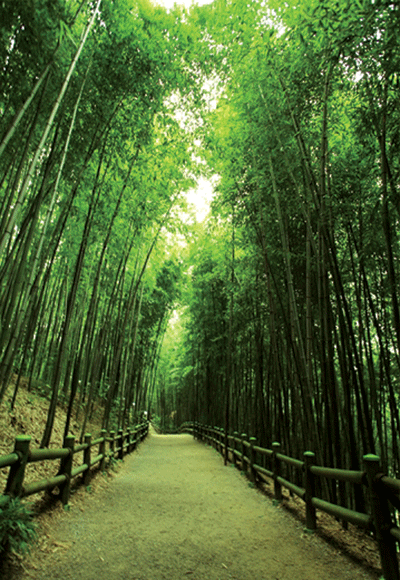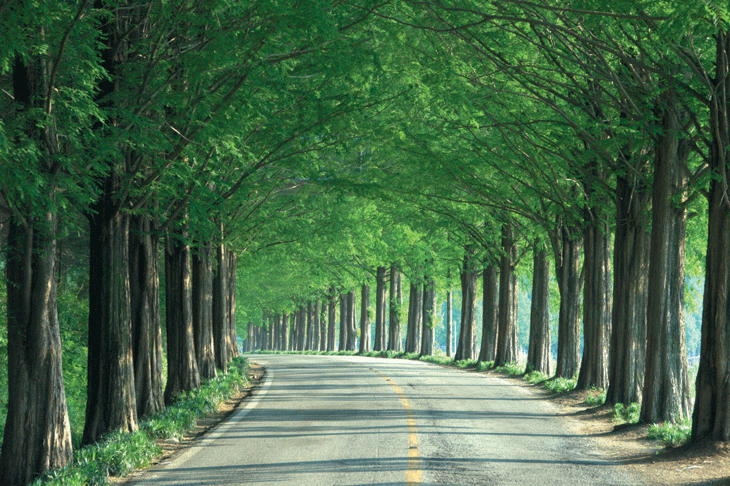LOCAL AUTONOMY
Damyang signs MOU with Mongolia Umnugovi Aimag
Damyang World Bamboo Fair
set for June 27-Aug. 15, 2015
Damyang in Jeollanam-do (South Jeolla Province), which is noted for its quality bamboo, is busy making preparations for the 2015 Damyang World Bamboo Fair. The special fair, themed “The Future of Green Rich in Bamboo,” is due to take place between June 27 and August 15, 2015 around Damyang’s Juknokwon Forest. Many tourist attractions including the annual Bamboo Festival and Bamboo Museum have been already created in the city.

Damyang Mayor Choi Hyung-shik said, “Damyang bamboo has a history of 1,000 years. It is a valued local asset handed down from our ancestors. We are all obliged to preserve it and get it adapted to the changes of the times.” The expo will help enhance the brand value of Damyang as an ecological city, he added. As a result, he foresaw that the tourism and leisure industry in Damyang will be revitalized, along with a surge in sales of its agricultural products.
A committee dedicated to promotion of the 2015 Damyang World Bamboo Fair was created on June 27, two years before the opening of the expo, with about 1,000 people including local dignitaries and residents attending. Among the dignitaries were Jeollanam-do Gov. Park Joon-yung and Damyang Mayor Choi. The 500-member promotion committee is divided into several teams including the public agencies consulting team, administrative support team and PR team.
In a congratulatory message, Jeollanam-do Gov. Park committed support to the Bamboo Fair.
“We will make every effort to ensure that the 2015 Damyang World Bamboo Fair winds up in success by taking advantage of the rich experience and expertise which we have earned from the FI Car Racing, 2012 Yeosu World Expo and 2013 Suncheon Bay International Garden Expo,” he stressed.
Bamboo is widely used and appreciated in Korea. Of particular note, Damyang is more closely associated with bamboo. Most Koreans say that “bamboo reminds them of Damyang.” The area planted with bamboo in Damyang represents a share of 25.5% (1,802ha) of the national territory filled with bamboo shoots.
Currently, there is a market that sells a variety of bamboo products in Samdari, Damyang-eup. This is the only bamboo market in Korea which also deals in finished bamboo products. The Damyang Bamboo Museum, opened in March 1998, is another tourist attraction.
From ancient Goryeo Dynasty, villagers in Damyang gathered every year and made bamboo products for another year of abundance. There are six intangible cultural assets and nine masters, all related to bamboo in Damyang. Juknokwon, as it is known in Korean, is a 25 acre complex full of hiking trails, man-made waterfalls, and bamboo. The forest garden attracts some 1.2 million tourists a year.

The 2015 Damyang World Bamboo Fair aims to attract about 900,000 tourists including 20 foreigners. It will have three distinct features. First, it seeks to be an “eco-friendly fair” as its main hall, Juknokwon, is a natural garden. Second, it will be a “small but strong fair” which will feature solid content. Third, there will be no burdens of managing fair facilities after it winds up.
After the expo is over, the status of the main hall Juknokwon Forest will remain unchanged as a natural garden. The PR Hall will be used as a tourism publicity center by the Damyang-gun Office, while the Visual Hall will transform into an eco-friendly exhibition facility. The exhibition, enterprise and international halls will be set up with TFS tents. A total of 14.5 billion won will be invested for the special Bamboo Fair.
The 2015 Damyang World Bamboo Fair Organizing Committee noted that there is a growing global consensus about the economic values of bamboo in light of the serious climate change that is derived primarily from the reduction of tropical jungles. The committee said the domestic bamboo market is expected to expand as a result of production of well-being items and stepped-up R&Ds on future-oriented bamboo products. “We will also seek to revive the stagnant regional economy by enhancing our brand value,” said the committee. While the fair gets underway, various events including academic gatherings on bamboo and exhibitions of bamboo products are planned as well.

Meanwhile, the annual Bamboo Festival takes place in Damyang in May every year. As the only bamboo festival in Korea, the Damyang Bamboo Festival offers a variety of programs. In addition, the festival features multiple events and games involving bamboo such as painting and instrumental performances, as well as bamboo rafting, water bike riding, archery and water gun fights, say Damyang-gun officials.
They say that a variety of bamboo displays from Korea and abroad are featured during the festival. Special products include decorations, musical instruments, and different household items can be found. There are fun activities for all the guests and visitors. There are bamboo water pistol fights, bamboo archery, fish catching with bamboo baskets, bamboo log raft riding on the Guanbang River, and bamboo fencing contest among others.

As for ecological values of bamboo, it is said to absorb 29.2 tons of carbon dioxide per hectare. In summer days, bamboo shoots generate plenty of phytoncide. For example, Juknokwon Forest generates 667 phytoncides, nearly twice as much as that generated by old pine trees. Bamboo can be planted in a number of areas that are not usually seen as being desirable for farming. Bamboo is said to be a wonderful renewable resource because it is always growing and working to create more plants.
“We will make thoroughgoing preparations for the 2015 Damyang World Bamboo Fair to make it a huge success and to put Damyang in the map,” said Damyang Mayor Choi. “We do hope that great numbers of people in and out of Korea would visit the Bamboo Fair in 2015,” he concluded.
In another development, Damyang signed an MOU on the promotion of cooperative ties with a Mongolian city. The signing was made between Damyang Mayor Choi and Gov. Badraa. B of Umnugovi aimag on July 7 this year. The MOU calls for strengthening cooperative relations in various fields including public administration, business, tourism and farming. “As such, we anticipate brisk mutual exchanges at both government and private levels,” Mayor Choi said.
A group of 18 civil servants and private businessmen, led by Damyang Mayor Choi, visited Umnugovi aimag between July 4 and July 8. In Dalanzadgad, a major city of Umnugovi aimag, they paid calls on an afforestation technology center, a meat processing factory and an oasis and vinyl houses in which various types of fruit-bearing trees are planted. Gov. Badraa. B suggested technological exchanges between both sides, showing keen interest in Damyang’s farming facilities and cultivation techniques.
Dalanzadgad, located 553km south of Mongolian capital Ulan Bator, has a population of 43,500. It has a great growth potential as it is blessed with rich resources in the mining, livestock and tourism fields. At present, some 25,000 foreigners are reportedly engaged in production activities in the city.
Mayor Choi remarked that Mongolia is a “marvelous land in which the past, present and future coexist. The two cities bear resemblance in many aspects.” He noted that Umnugovi aimag is similar to Damyang, a “green and slow city,” as both remain committed to preserving its traditions and culture, as well as its natural environments. Damyang has now established sisterhood relations with six foreign cities. It is prepared to upgrade its profile as a global city, while working to expand exchanges with cities across the globe. k

